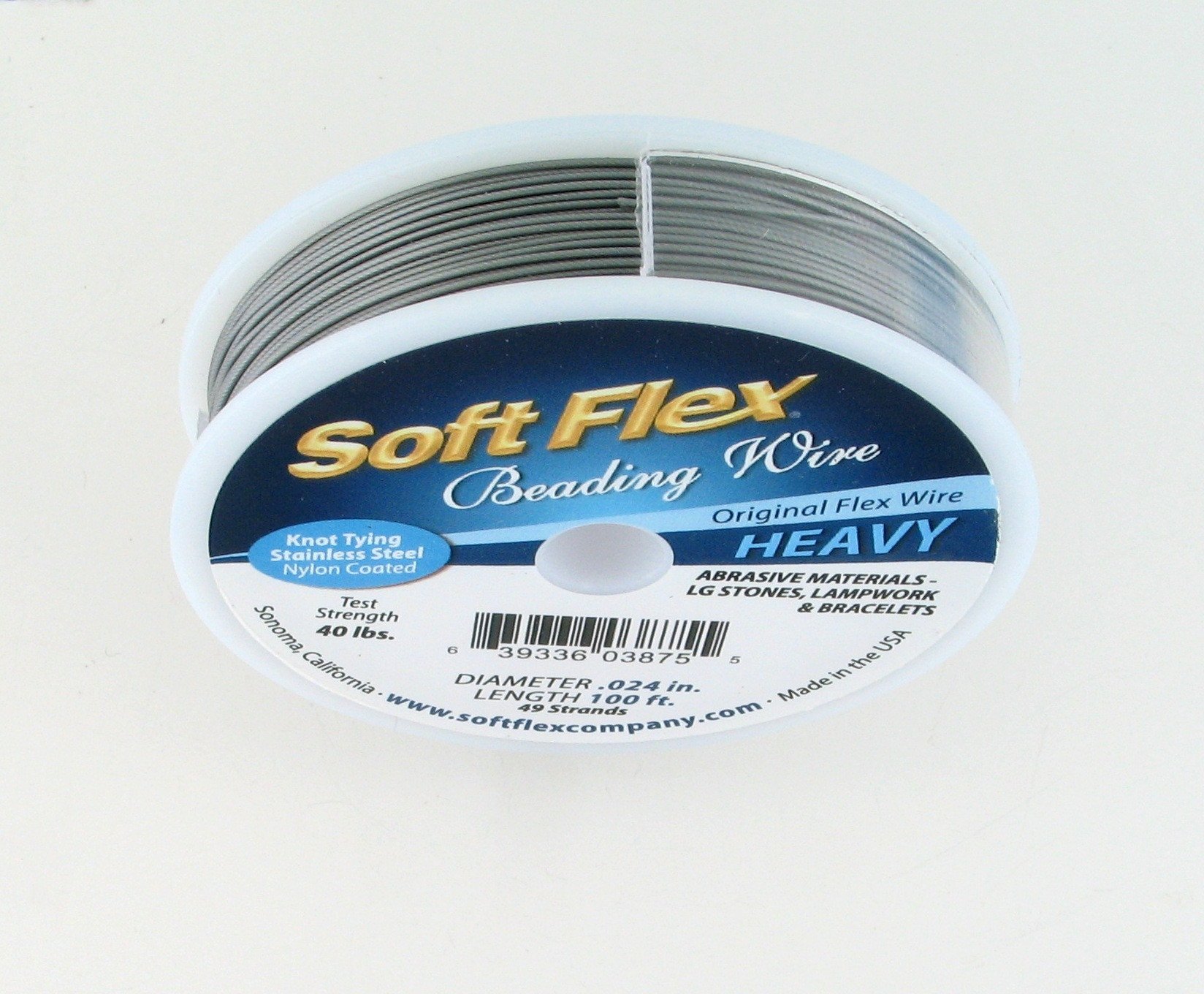Soft Flex beading wire is a versatile, durable, and high-quality option favored by many jewelry makers. Known for its flexibility and strength, Soft Flex wire caters to various beading projects, from simple bracelets to intricate necklaces. Consequently, understanding the characteristics, application techniques, and benefits of Soft Flex beading wire can significantly enhance your jewelry-making endeavors. Therefore, this comprehensive guide explores the components of Soft Flex wire, best practices for usage, and additional tips for achieving professional results. By delving into these aspects, you can confidently incorporate Soft Flex beading wire into your jewelry designs.
Components and Characteristics of Soft Flex Beading Wire
Soft Flex beading wire is composed of multiple strands of stainless steel coated with nylon, offering unique properties that distinguish it from other beading materials. Understanding these components and characteristics helps appreciate its versatility and performance. Therefore, exploring the structure of Soft Flex wire is crucial.
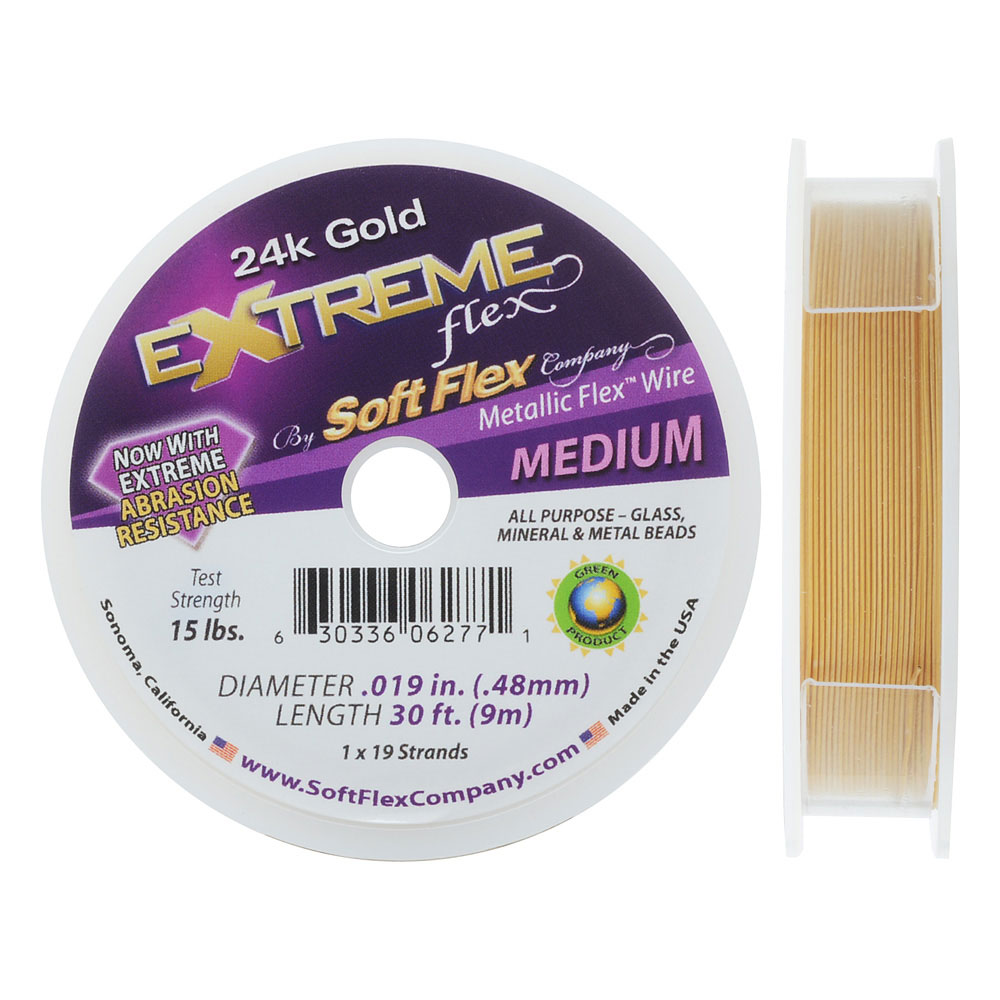
Composition of Soft Flex Wire
The core of Soft Flex beading wire consists of multiple strands of stainless steel, making it both strong and flexible. These strands are woven together to create a sturdy foundation capable of withstanding tension and wear. A nylon coating is then applied to the stainless steel core, providing additional durability and flexibility. The nylon coating also protects the wire from tarnishing, extending the lifespan of your jewelry creations. By understanding the composition of Soft Flex wire, you can appreciate its robust yet flexible nature. Therefore, recognizing the importance of its structure is crucial.
Flexibility and Strength
One of the standout features of Soft Flex beading wire is its exceptional flexibility without compromising strength. This balance of attributes allows the wire to bend and flex without kinking or breaking, making it ideal for intricate designs and multiple strand projects. The flexibility of Soft Flex wire also ensures a comfortable fit for the wearer, as the jewelry can move naturally with the body. Additionally, the sturdy construction of the wire enables it to support heavier beads and embellishments without sagging or losing its shape. By understanding the flexibility and strength of Soft Flex wire, you can leverage these qualities in your designs. Therefore, recognizing its unique properties is essential.
Variety of Sizes and Colors
Soft Flex beading wire is available in various sizes and colors, catering to different design needs and personal preferences. Sizes range from fine (.010 inch) to heavy (.024 inch), allowing you to choose the appropriate thickness based on the beads and the desired drape of the jewelry. The wide range of colors, from classic metallic tones to vibrant hues, enables you to match or complement your beads, enhancing the overall aesthetic of your creations. By understanding the variety of sizes and colors available, you can select the perfect Soft Flex wire for each project. Therefore, recognizing the importance of options is crucial.

Best Practices for Using Soft Flex Beading Wire
Utilizing Soft Flex beading wire effectively involves mastering specific techniques and adhering to best practices. Understanding these methods ensures professional and durable results. Therefore, exploring best practices for using Soft Flex wire is essential.
Cutting and Prepping the Wire
Properly cutting and prepping Soft Flex wire is the first step towards a successful beading project. Use high-quality wire cutters designed for beading wire to ensure clean and precise cuts. Before stringing beads, measure and cut the wire according to the length needed for your project, adding a few extra inches for securing clasps or crimps. To prevent fraying, use a precision crimping tool or bead stopper at the ends of the wire during the beading process. By understanding the importance of cutting and prepping the wire, you can set the foundation for a smooth beading experience. Therefore, recognizing the need for proper preparation is crucial.
Stringing Beads and Securing Ends
Stringing beads onto Soft Flex wire requires careful attention to prevent kinks and ensure even distribution. Thread beads in the desired pattern, periodically checking for even spacing and alignment. Upon completing the bead stringing, secure the ends of the wire using crimp beads or tubes. To do this, thread a crimp bead onto the wire, followed by the clasp or jump ring. Loop the wire back through the crimp bead, ensuring a snug fit. Use crimping pliers to compress the crimp bead, securing the loop. Trim excess wire and cover the crimp bead with a crimp cover for a polished finish. By understanding the techniques for stringing beads and securing ends, you can achieve professional-quality jewelry. Therefore, recognizing the importance of secure finishes is essential.
Incorporating Multiple Strands
Soft Flex wire is particularly well-suited for multi-strand designs, allowing for creative and dynamic jewelry pieces. When working with multiple strands, it’s essential to maintain organization and manage the wires effectively. Use bead spacers or multi-strand clasps to keep the strands aligned and evenly spaced. Consider using a beading tray or mat to lay out the design before stringing, ensuring a cohesive and balanced arrangement. By understanding the methods for incorporating multiple strands, you can create complex and visually appealing designs. Therefore, recognizing the versatility of multi-strand projects is crucial.
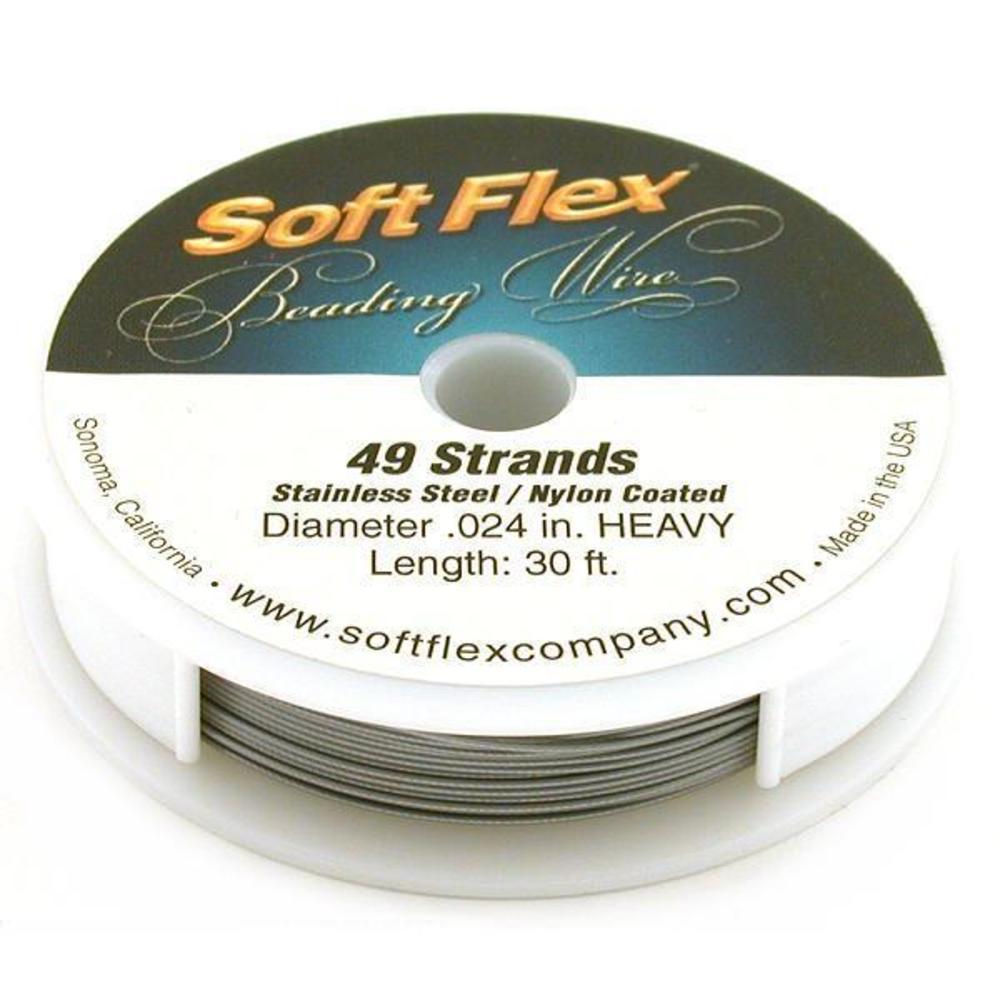
Additional Tips for Achieving Professional Results
Achieving professional results with Soft Flex beading wire involves additional tips and considerations that enhance the quality and longevity of your jewelry. Understanding these tips ensures optimal outcomes. Therefore, exploring valuable tips for using Soft Flex wire is essential.
Experimenting with Design Techniques
Experimenting with different design techniques allows you to discover new styles and enhance your beading skills. Try combining various bead types, colors, and sizes to create unique patterns and textures. Explore techniques such as bead weaving, wire wrapping, and incorporating focal beads or pendants. Using Soft Flex wire’s flexibility, experiment with loops, twists, and other creative shapes. By understanding the value of experimentation, you can expand your design repertoire and create one-of-a-kind pieces. Therefore, recognizing the importance of creativity is crucial.
Paying Attention to Detail
Attention to detail is key to achieving a polished and professional look in your jewelry. Ensure beads are evenly spaced and the wire is free from kinks or bends. Use bead caps, spacers, and crimp covers to enhance the aesthetic and provide a neat finish. Regularly inspect your work for any irregularities or loose ends and make necessary adjustments. By understanding the significance of detail, you can elevate the quality of your jewelry creations. Therefore, recognizing the importance of meticulousness is essential.
Maintaining Your Jewelry
Maintaining your Soft Flex wire jewelry helps preserve its beauty and functionality. Store your pieces in a dry, cool place away from direct sunlight to prevent tarnishing and degradation. Clean the jewelry regularly with a soft cloth to remove dirt and oils. Avoid exposing the jewelry to harsh chemicals, including perfumes, cleaning agents, and chlorinated water, which can damage the wire and beads. By understanding the importance of maintenance, you can ensure the longevity of your jewelry pieces. Therefore, recognizing the need for proper care is crucial.
Addressing Common Questions About Soft Flex Beading Wire
Understanding common questions about Soft Flex beading wire provides clarity and enhances knowledge. Knowledge of these answers ensures better preparation and practice. Therefore, exploring common questions is essential.
Can Soft Flex Wire Be Knotted?
Yes, Soft Flex wire can be knotted, although it requires careful handling due to its multi-strand construction and nylon coating. When knotting Soft Flex wire, use gentle and consistent pressure to avoid fraying or damaging the strands. Consider using knotting tools or employing additional crimp beads to secure knots. By understanding the techniques for knotting Soft Flex wire, you can add variety and style to your designs. Therefore, recognizing the adaptability of Soft Flex wire is crucial.
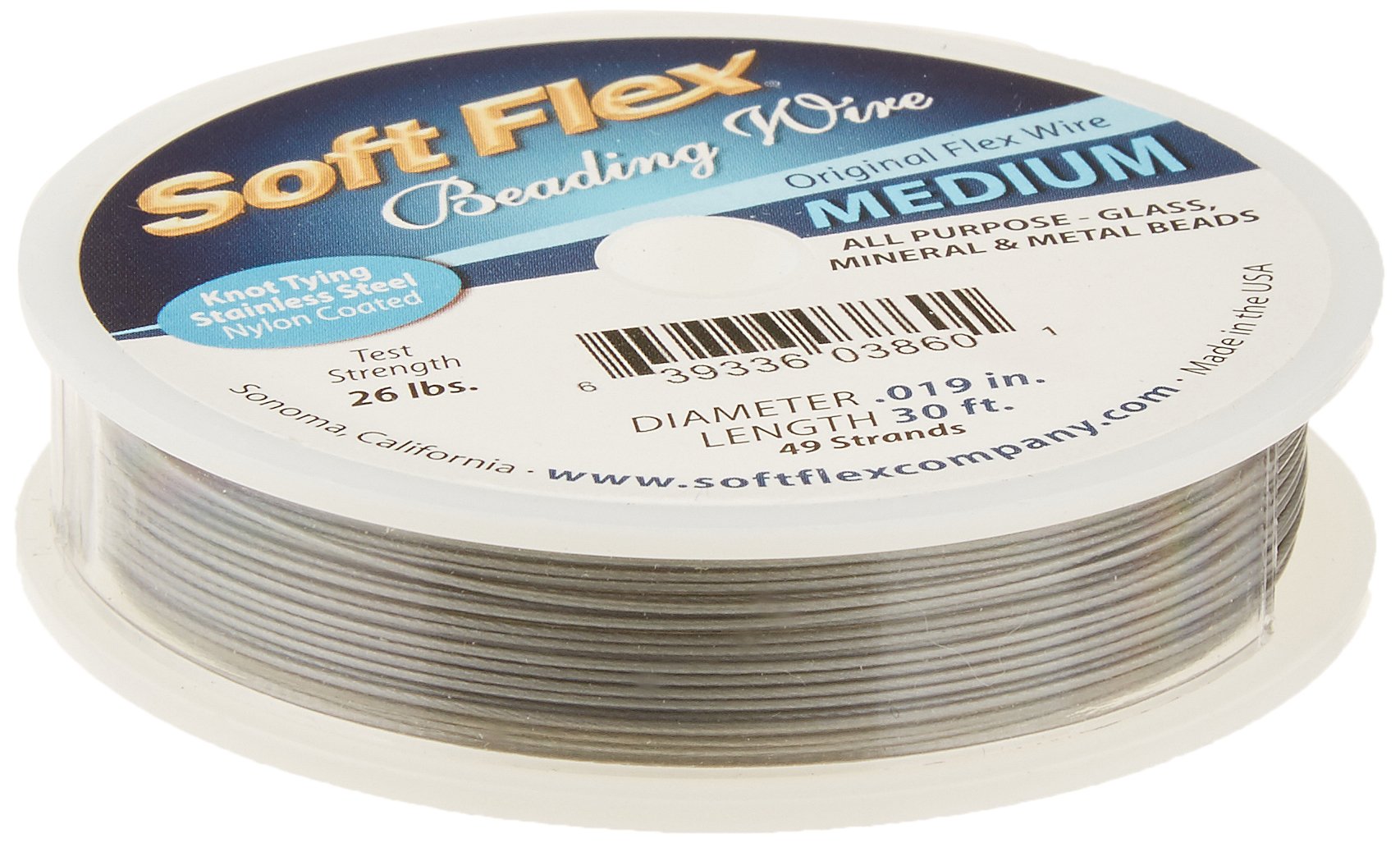
What Beads Are Suitable for Soft Flex Wire?
Soft Flex wire is versatile and compatible with a wide range of beads, including glass, crystal, gemstone, and metal beads. The choice of beads depends on the size and thickness of the wire, as well as the design requirements. Ensure that the bead holes are large enough to accommodate the chosen wire thickness comfortably. Additionally, using bead guards or wire-protecting tips can prevent abrasion and prolong the integrity of the wire. By understanding the compatibility of beads with Soft Flex wire, you can select the best materials for your projects. Therefore, recognizing the importance of matching beads and wire is essential.
Addressing Common Misconceptions About Soft Flex Beading Wire
Addressing common misconceptions about Soft Flex beading wire provides accurate information and dispels unwarranted concerns. Clearing up misunderstandings ensures an informed perspective. Therefore, exploring common misconceptions is important.
Misconception: Soft Flex Wire Is Only for Advanced Jewelry Makers
A common misconception is that Soft Flex wire is exclusively for advanced jewelry makers. In reality, Soft Flex wire is user-friendly and suitable for all skill levels. Its flexibility, strength, and ease of use make it ideal for beginners and experienced artisans alike. Simple projects, such as single-strand bracelets or necklaces, can be easily accomplished with Soft Flex wire, while its versatility allows for more complex and intricate designs as skills progress. By understanding the accessibility of Soft Flex wire, you can confidently incorporate it into your jewelry-making endeavors. Therefore, dispelling this misconception emphasizes its inclusivity.
Misconception: Soft Flex Wire Cannot Support Heavy Beads
Another misconception is that Soft Flex wire is not strong enough to support heavy beads or embellishments. Contrary to this belief, the multi-strand stainless steel core and durable nylon coating provide ample strength to handle substantial beads and elaborate designs. Choosing the correct wire thickness for the project ensures optimal support and prevents sagging or breakage. By understanding the strength capabilities of Soft Flex wire, you can trust it for various beading projects. Therefore, dispelling this myth highlights its robustness.
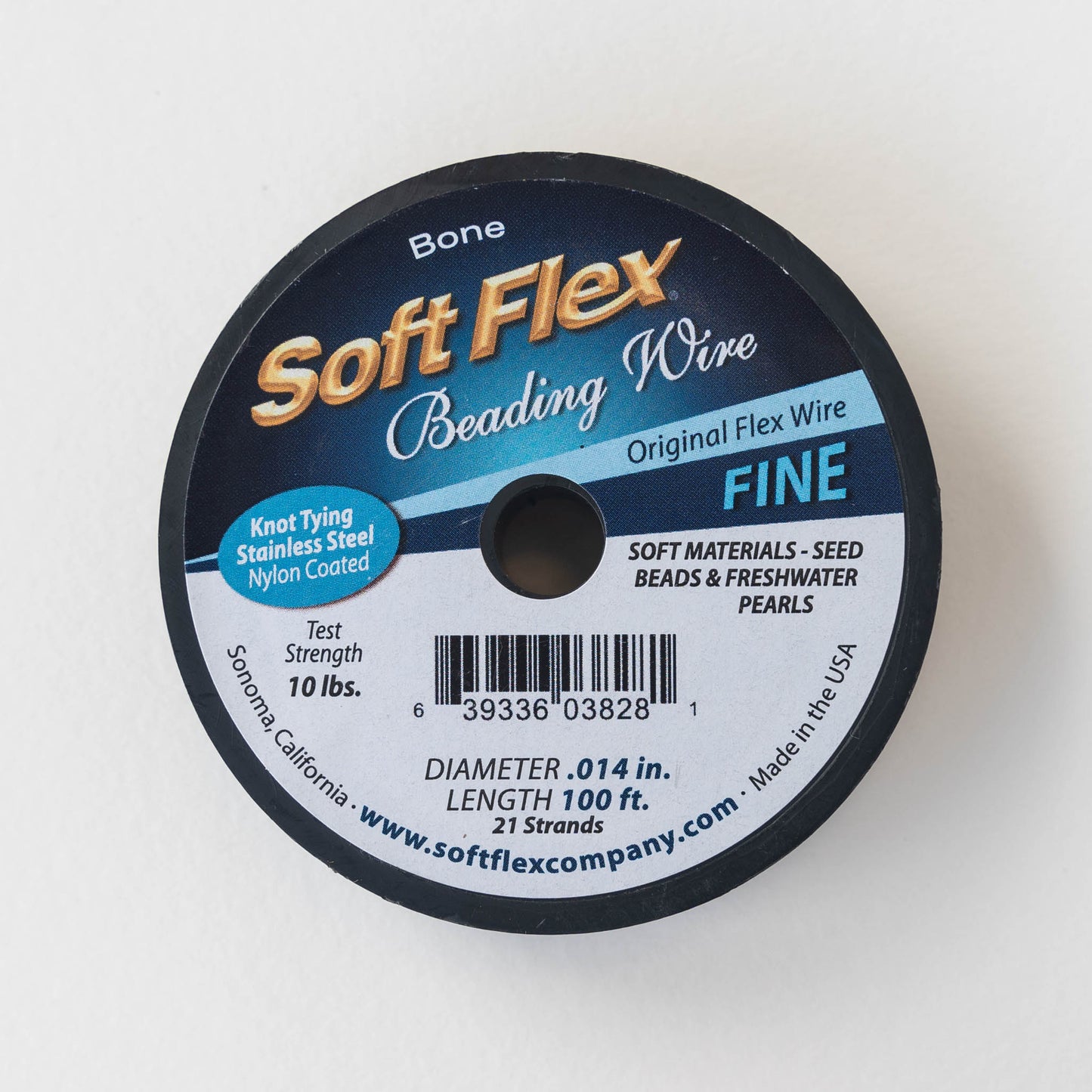
Conclusion: Embracing Soft Flex Beading Wire in Your Jewelry Projects
Embracing Soft Flex beading wire in your jewelry projects involves understanding its composition, mastering techniques, and adhering to best practices. Proper preparation, including cutting and prepping the wire, ensures a smooth beading experience.
Exploring critical aspects such as stringing beads, securing ends, incorporating multiple strands, and experimenting with design techniques ensures comprehensive knowledge and practice. Recognizing the importance of addressing common questions and misconceptions enhances overall confidence and creativity.
By engaging with these elements, you can achieve professional-quality jewelry and explore endless design possibilities with Soft Flex beading wire. Therefore, whether you are a beginner or an experienced jewelry maker, understanding the essential considerations and tips for using Soft Flex wire offers practical and inspiring insights. Embrace the opportunity to elevate your jewelry-making skills, knowing you have the knowledge and resources to create stunning, durable, and unique pieces!
